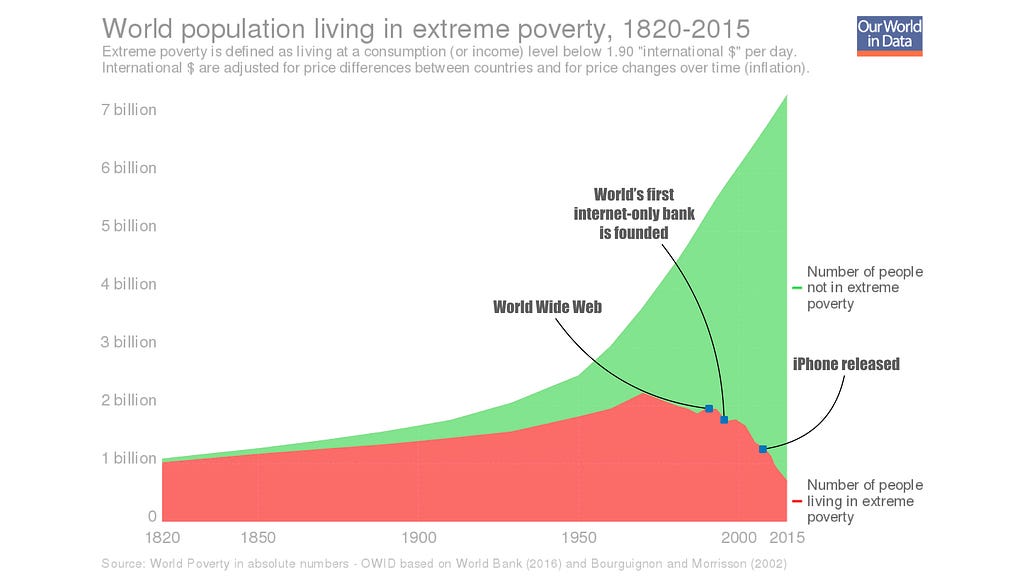Latest news about Bitcoin and all cryptocurrencies. Your daily crypto news habit.
 Nairobi, Kenya (June 7, 2018)
Nairobi, Kenya (June 7, 2018)
I hear and read a lot of stories about artificial intelligence and distributed ledger technologies (including blockchain) not being ready for mainstream adoption anytime soon.
And such skeptical stories can be compelling. After all, there are still many flaws in these technologies, the claims of advocates are often exaggerated, and there is an enormous amount of hype in the public discussion of AI and blockchain.
However, negative predictions about the mainstream acceptance and adoption of these new technologies were put in a different light after my trip to Kenya last week.
Here are three reasons why.
#1 — Governments Are Looking for “Cutting-edge” Digital Solutions
The Kenyan government seems to understand the potential benefits of digital technologies working together. Notably, the government is willing to jump on the technology bandwagon.
For this reason, they have put together a task force to explore how artificial intelligence and blockchain technology can streamline the processing of land ownership titles (and, at the same time, put an end to “land grabbing”).
In an interview with the BBC, the Chairman of the task force, Bitange Ndemo, was clear about Kenya’s aspirations:
“We missed the Internet wave, caught up with mobile technology… blockchain is the next wave — and we must be part of it.”
These aren’t just empty words.
My conversations and discussions with government representatives clearly showed that they are not only discussing “cutting-edge” solutions to deal with issues like corruption and fraud. But, they are also willing to implement them (even if they aren’t flawless yet). They see the many opportunities new technologies are offering in the areas of financial inclusion, the growth of start-ups and SMEs, and the creation of a sustainable environment.
Regulators are even considering the creation of a “regulatory sandbox” in which they facilitate and encourage a space to discuss, collaborate and experiment with innovative technologists. This allows the testing of new technology-driven services, under the supervision of regulators.
#2 — Corporations Understand the Power of Technology-Driven Disruption
I gave presentations at a large bank which is headquartered in Nairobi.
The bank had already leveraged mobile technologies to improve the quality of, and access to, financial services for individuals that have traditionally been excluded from such opportunities. The bank sees new digital technologies (including artificial intelligence and blockchain technology) as a next step in improving these services.
The entrepreneurial spirit and openness to innovative solutions and suggestions was probably the most exciting part of my time at the bank. I have given many presentations at “big” corporations around the world, but it doesn’t often happen that the audience is so immediately receptive to change.
#3 — Consumers Demand the Next Wave of New Technologies
I also had many conversations with the consumers of the new technologies. You can feel the excitement about the latest digital technologies.
They realize how new digital technologies will offer tremendous entrepreneurial opportunities that they have always been deprived of for such a long time. They already have the very positive experience with smartphones and mobile technology.
In this context, financial inclusion was often mentioned. For instance, a taxi driver explained very clearly how mobile technologies had changed his life. Even a few years ago, he was excluded from the financial system. Opening a bank account was just not feasible. It was too expensive and required too much paperwork.
Now he has the bank in his pocket.
Technology has made the opening of a bank account and transferring money so much simpler and easier. This has helped open the world for his children.
Within one generation, the lives of many people have been transformed. After all, being part of the financial system creates opportunities irrespective of where you live and work.
Having tasted the benefits of new technology, the demand for the next generation of technological innovations is palpable.
What’s Next?
My experience in Kenya put my understanding of the potential of new digital technologies into a different perspective.
The energy, experimentation, and co-creation are inspiring.
And, there are other signs that the mainstream adoption of new technologies can happen sooner than we think in places like Kenya:
- The government’s recognition of the opportunities to “leapfrog” various stages in the development of the economy.
- The many international, also local, organizations teaching developers how to use and develop blockchain technology and artificial intelligence.
- The emergence and celebration of “social media” influencers in the “traditional media.”
- The development of mobile technology ecosystems built around the success of the social transformation of early generations of tech.
- The increasing access to foreign investments and partnerships (particularly with China).
 One of the many Chinese development projects in Nairobi
One of the many Chinese development projects in Nairobi
I often see claims that new technologies create greater concentrations of power in fewer tech giants located in traditional economic centers. No doubt there is some truth in this narrative. Tech giants are becoming bigger and bigger, and their economic and political power is staggering.
But my time in Kenya showed me a different, and less documented, aspect of how technology is disrupting our world. This is a story about how technology creates new possibilities and opportunities for the emergence of “new centers” of excellence far-removed from the established tech giants and traditional economic centers.
And the possibilities for tech-powered social transformation may be far greater in these places. In that sense, it would not come as a great surprise if elements of the “fourth technological revolution” were to originate somewhere like Kenya.
Thank you for reading! Please click the 👏 below, or leave a comment.
There is a new story every week. So if you follow me you won’t miss my latest insights about how the digital age is changing the way we live and work.
The “Fast” & “Mainstream” Adoption of AI & Blockchain was originally published in Hacker Noon on Medium, where people are continuing the conversation by highlighting and responding to this story.
Disclaimer
The views and opinions expressed in this article are solely those of the authors and do not reflect the views of Bitcoin Insider. Every investment and trading move involves risk - this is especially true for cryptocurrencies given their volatility. We strongly advise our readers to conduct their own research when making a decision.

